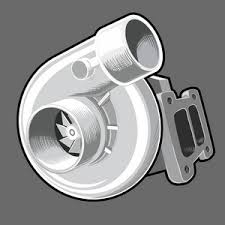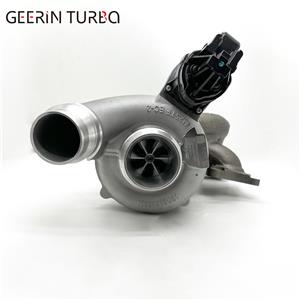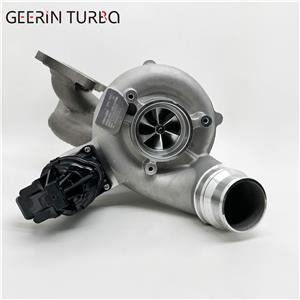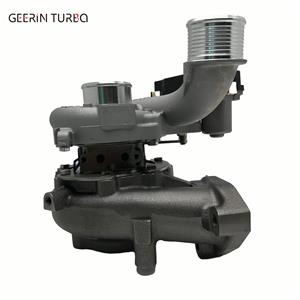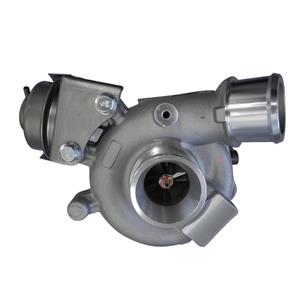How will turbochargers deliver greater power and efficiency in the future?
How will turbochargers bring more power and efficiency in the future?
We know that today's turbochargers are no longer the high-speed spinning parts that broke engines so easily in the 1980s. Turbos are now fitted to at least one in four cars in North America. They are more efficient, more reliable and less costly, and many of our favourite engines have made the compromise to turbocharging.
According to turbo engine manufacturer PortoPower, nearly half of the world's new light vehicles will be turbocharged within five years, 18 million more than the current market, of which North America is expected to account for 39%.
The adoption of supercharged engines is aimed at either increasing power, improving fuel economy or both. For turbocharging, the way forward may be to further improve power performance while ensuring fuel efficiency and eliminating the shortcomings of current turbocharged engines.
Electric turbos and hybrids
Those who do not like the turbocharged hybrid V6 powertrains currently used in Formula 1 cars will be driving cars with similar technology in a few years' time.
The car. A DC electric motor embedded in the shaft connecting the turbine to the compressor allows the turbine to spin at full speed without having to use exhaust gas to drive it, and this can be done almost instantaneously, thus reducing turbine lag to almost zero.
As a result, the electric motor-driven turbine can compensate for the lack of power response of a conventional turbo engine in the low rpm range where the turbine has not yet been driven. Although some high-end models are currently equipped with mechanical turbo twin-chargers that can also achieve this effect, their high cost and large space requirements make it impossible to popularise such a technical configuration in ordinary vehicles.
Secondly, the electric drive allows for more accurate and easy control of boost power through software. At the same time, the electric turbine will use the energy from excess exhaust gases to re-generate electricity, rather than letting it bypass the turbine when it is under high load and waste it. A supercapacitor will be used to store this power to drive the turbine or other electricity-using components, like a hybrid system that can generate electricity. The result of using an electric turbo is therefore faster power delivery and more efficient fuel economy.
We have already seen electro-mechanical supercharging in the Ford Focus and Audi diesel prototypes, although on a slightly different principle and not connected to the exhaust pipe. However, ignoring for a moment the unproven reliability of the electric turbo in production cars, it faces the same ^big^ problem as electro-mechanical supercharging: it requires a high level of electrical support as a source of energy when operating, or rather more energy to be consumed.
At peak load, electric turbocharging requires 48 volts to drive, but manufacturers have not shown much interest in redesigning their current 12-volt systems. At the same time, it is difficult for electric turbines to achieve the efficiency of conventional turbines at high load conditions due to power and the limitations of the axial flow turbine architecture used in some cases.
So, to meet the demand for high voltages, the turbo-generators mentioned above in F1 racing technology need to be further improved in production cars to convert exhaust gases into electricity. Alternatively, the high voltage batteries found in conventional hybrids might be employed to provide the drive for the electric turbine. Moreover, energy consumption ratio, heat dissipation, longevity and the weight of the electric motor system are also potential issues if one insists on achieving the same effect as a conventional turbine through electricity especially at high loads.
Perhaps an electric turbo in the low rev range, combined with a switch to a conventional turbo in the high rev range is not a bad way to go both ways, as Volvo and Audi, for example, are moving in this direction. But there are also companies like Subaru who are pursuing ^technically^ a more radical approach of using electric turbos working in the full rev range to replace conventional turbos completely.
But taking a step back, even if we get past the various technical issues, the need to adopt electric turbos is still being discussed on all sides. This is because, fundamentally, electric turbines require additional power, which is contrary to the energy-saving purpose of conventional turbines that use exhaust gas as power. Finding the right balance between energy efficiency and performance is therefore something that will need to be explored in the future.
Due to structural limitations, conventional turbochargers have inherent deficiencies. Once we have devised ideas to compensate for these shortcomings, the application of these new technologies to vehicles is now also a major test of hardware materials. For example, the aforementioned materials that can withstand extremely high temperatures are a bottleneck in the development of turbo systems to achieve higher thermal efficiency.
Further, as technology develops and advances, we believe that technical issues such as those mentioned above will soon be resolved. However, despite the fact that smaller turbocharged engines have achieved better results in EPA tests, in many road tests small turbos do not achieve the claimed fuel consumption levels compared to naturally aspirated engines.
The fact that the results now recognised on the test instruments often fail to pass on real roads shows that the current means of testing the effectiveness of the technology is not yet perfect and is some way from a fully realistic driving environment. So the next step is to find a way of matching different situations so that the results achieved in the laboratory and on the test bench can be fully achieved in reality, otherwise everything is just a paper exercise.
